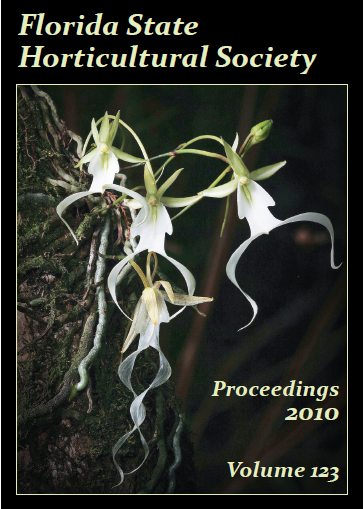Citrus
An Economic Analysis of the U.S. Orange Juice Tariff and the Competitiveness of Florida Growers and Processors
Publicado 2010-12-01
Palabras clave
- Florida freeze,
- Brazil,
- citrus industries,
- tariffs,
- frozen concentrate
Resumen
Although Sao Paulo, Brazil has a climate and soils conducive to producing juice oranges, prior to the 1970s, Brazil was a relatively minor producer of processed oranges and orange juice (Table 1). However, a devastating Florida freeze in 1962, and subsequent freezes in the 1970s and 1980s created an opportunity for Brazil to expand its orange and orange juice production. Most of this production was exported (Table 1), primarily to the U.S. and Western Europe. A climate where freezes do not occur along with cheaper land and labor enabled Brazil to continue its expansion, until by the 1990s, Brazil was by far the largest orange juice producer in the world (Fig. 1), producing almost twice the amount of oranges and orange juice as Florida. In fact, without the protective U.S. tariff on imported frozen concentrated orange juice (FCOJ), the Florida processed orange industry would probably either be much smaller that it is or out of business. This paper shows how this tariff has been reduced by trade legislation and by inflation and the impact than it has had on the Florida processed orange industry.Citas
- Florida Department of Citrus, Economic and Market Research Department. 2009. Citrus Reference Book. p. 24, 25, 39. Gainesville, FL.
- Muraro, R.P. 1979–80 to 2002–03 Seasons. Economic Information Report Series: Budgeting costs and returns for Southwest Florida citrus production. Food and Resource Economics Dept., University of Florida, IFAS, Gainesville.
- Muraro, R.P. 1993. Break-even cost comparisons of key citrus producing areas: Florida, Brazil, and Mexico. Food and Resource Economics Dept. Intl. Working Paper Ser. IW 93-7.
- Muraro, R.P. 2009. Summary of 2008–2009 citrus budgets for the Southwest Florida production region. Citrus Research and Education Center, University of Florida, IFAS, Gainesville, FL. .
- Muraro, R.P. and A.A. Amaro. 1990. An overview of Florida (USA) and Sao Paulo (Brazil) processed orange industries with comparative costs and returns, 1979–80 through 1987–88 seasons. Food and Resource Economics Dept., Econ. Info. Rpt. 274, University of Florida.
- Muraro, R.P. and R.A. Morris. 2009. The dynamics and implications of recent increases in citrus production costs. Food and Resource Economics Dept., University of Florida, IFAS, Gainesville. FE 793. .
- Muraro, R.P. and R.A. Morris. 2010. 2008–09 costs to produce processed oranges in Sao Paulo, Brazil. Unpublished summary notes of information from University of Sao Paulo –Piracicaba, FNP, and interviews with growers in Sao Paulo State–Brazil. In process.
- Muraro, R. P. and M. Pozzan. 2004. Production costs: Comparison between Florida and Sao Paulo. Proc. 8th Intl. Citrus Seminar. Bebedouro Citrus Research Experimental Station (Sao Paulo, Brazil).
- Muraro, R.P., T.H. Spreen, and F.M. Roka. 2000. The impact of the 1999 Brazilian devaluation on the delivered-in costs of oranges produced in Sao Paulo, Brazil. Food and Resource Economics Dept., University of Florida, Gainesville. FE 213 (EDIS).
- Muraro, R.P., T.H. Spreen, and M. Pozzan. 2002. Comparative costs of growing citrus in Florida and Sao Paulo (Brazil) for the 2000–01 season. Gainesville, FL: University of Florida, IFAS, Food and Resource Economics Dept. FE 364 (EDIS).
- U.S. Department of Agriculture, Foreign Agricultural Service, Foreign Agriculture Circular. Various Issues, 1965–1990. Horticultural Products. Washington, DC.
- U.S. Department of Agriculture, Foreign Agricultural Service. PSD Online. Various Issues. Orange juice: Production, supply and distribution in selected countries.
- U.S. Department of Labor, Bureau of Labor Statistics. 2010. Producer price indexes for major commodity groups. Farm Products and Processed Foods and Feeds, 1965-Council of Economic Advisors. Table B-67. .
- Wilson, J.H. 1980. Brazil’s orange juice industry. U.S. Dept. of Agriculture, Foreign Agricultural Service. FAS–M-295. Washington, DC.

